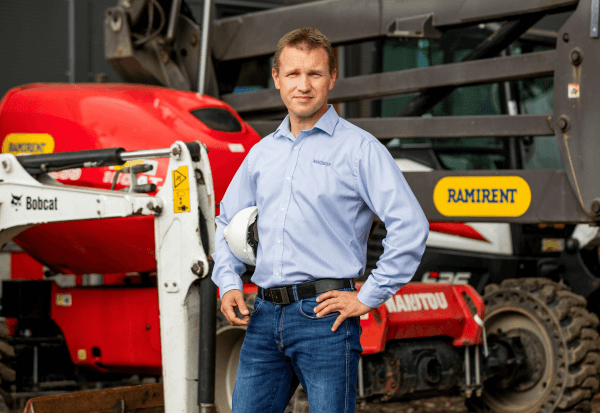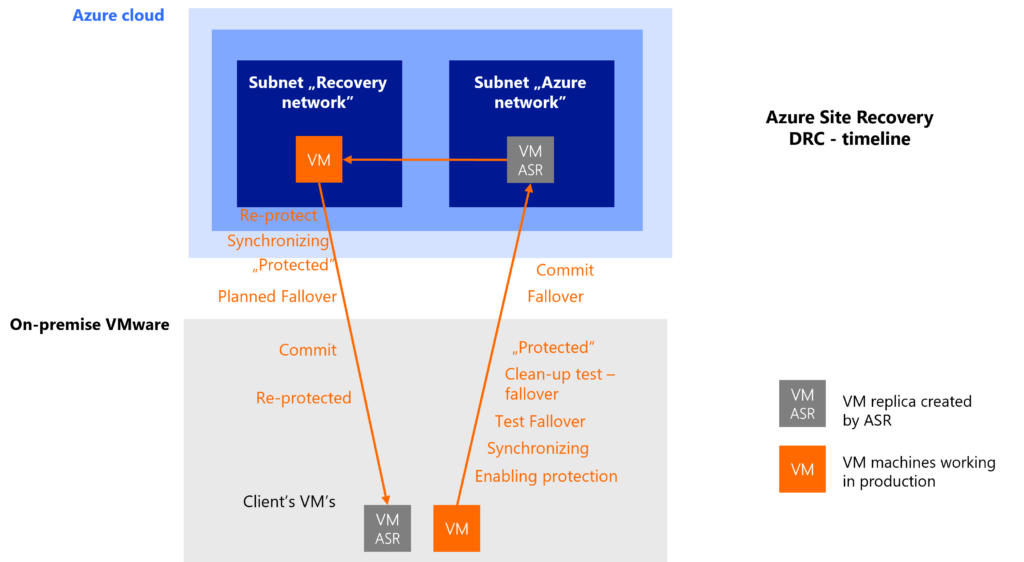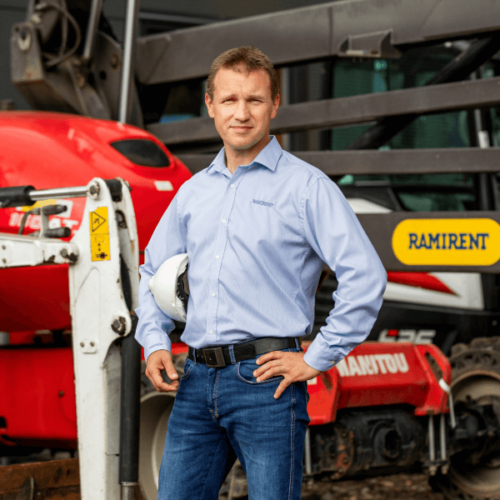To ensure business continuity, we duplicate everything – from power lines, through power generators, UPS power supplies, power circuits to server racks, Internet connections to actively replicated arrays and automated virtualization. Going a step further, companies purchase services of data backup or replication to another remote data center. But are these investments economically justified? And more importantly, will this protect us from the increasingly real threats of blackout, terrorist activities, or natural disasters?
Instead of investing in redundancy of everything, it is worth considering a simple service of replicating systems to the public cloud. At All for One Poland, we develop competencies in cloud services, including services based on Microsoft Azure public clouds, Amazon Web Services (AWS) and Google Cloud. Based on these experiences, we successfully carried out a project to launch the replication of the Ramirent environment as part of the Microsoft Azure Site Recovery service, along with complex tests of switching the entire solution to the public cloud.
DRC in Azure
Ramirent is a leader in the rental of construction equipment, lifts, containers and scaffolding in Poland. It belongs to a European group based in Finland. Ramirent has been present on the Polish market since 2000, and the cooperation between our companies began in 2010 with the replication of their systems to two All for One Poland Data Centers. Over the years, the service has evolved through collocation of the client’s infrastructure, WAN management, to the current model, where 100% of the systems are hosted and managed (to the level of operating systems and databases) by All for One Poland.
More than 90% of Ramirent’s systems are based on Microsoft Windows systems, so the natural candidate for the Disaster Recovery Center (DRC) service was the Microsoft Azure public cloud. Virtual machines from the Data Center at All for One Poland, based on VMware virtualization solutions, are replicated to the Microsoft Azure Site Recovery (ASR) service in the Hyper-V format. For this purpose, the latest available version of ASR called Modernized was used. On the side of machines secured with ASR, it is required to install client software, the so-called Mobility client. Azure provides automatic updating of components of this service both on the replication server and on virtual client servers. We have designed the replication service in such a way so that in the event of a failure or test on the Azure side, the original IP addressing is preserved.

Replication of the client’s environment to the Azure cloud
For the client’s main database system, a data replication process was implemented in the Microsoft SQL Server database environment. This solution allows for automatic transfer and restoration of backups for transactional logs to a second database instance (the second instance can run on another logical virtual server). Replication occurs every 5 minutes from the server on the All for One Poland Data Centers side, and this data is restored every 15 minutes on the Azure cloud server.
Due to the nature of Microsoft Azure, virtual machines running in the cloud must have different vCPU/RAM parameters, i.e. they can be the same or larger compared to the parameters of the original. This results from the requirement to use the so-called Size in Azure, i.e. predefined patterns of virtual machines with specific amounts of vCPU and RAM.
Access to the Azure DRC environment as well as maintenance and security of the network infrastructure in Azure are provided through FortiGate Virtual Appliance (FGVA). It enables extended functionalities beyond those available in standard Azure solutions. FGVA is responsible for the security of incoming and outgoing traffic outside the Azure cloud, and the granulation of traffic between networks inside Azure, and serves as a VPN concentrator for both SSL VPN accounts and Site-to-Site tunnels. FGVA and the previously mentioned database system are the only virtual machines working on a daily basis on the Azure side as part of the DRC service.
In order to ensure the highest security and appropriate level of throughput, DRC uses Azure ExpressRoute – a dedicated, private connection between All for One Poland Data Center and the Microsoft Azure structure in a region located within the European Union. This connection enables a guaranteed level of data transmission without the use of Internet connections. To address a possible failure of ExpressRoute, a parallel Site-to-Site VPN connection was additionally configured in order to ensure continuous data replication to DRC.

Kamil Lisiecki, IT Manager, Ramirent
Business continuity in the cloud
Ensuring business continuity is one of the most important tasks that business has for IT. That’s why for years we have been investing in modern solutions to ensure our security, and following the trends that arise from both technological developments and the geopolitical situation. The Microsoft Azure Site Recovery service is one of the steps on this path. Another step is to ensure both substantive and operational support. In our case, is it provided by the specialists of All for One Poland. We have been working with them for more than a dozen years, entrusting them with our systems.
The Polish branch of Ramirent is the first in the group to use the Disaster Recovery Center service in the public cloud. I am glad that in cooperation with a trusted partner we can be a leader and share this experience with colleagues in other countries.
Kamil Lisiecki, IT Manager, Ramirent
Tests, tests
However, a properly configured DRC environment is only half the battle. Every backup system should undergo regular testing. It is no different in this case, where together with Ramirent we periodically test the downtime of the basic environment. During the test, the downtime of both All for One Poland Data Centers is simulated. DRC routines are then performed with running a complete production environment in the Azure cloud. This environment is then tested by the client’s users, who verify both the completeness of the systems and data, as well as their performance. Depending on the established scenario, two approaches are possible once DRC testing is complete:
- Removing the entire test environment in Azure and restoring communication with the environment on the Data Centers side, and then compiling replication back to Azure;
- Performing a reverse replication from Azure to the primary environment on the Data Centers side.
The diagram below shows the full cycle of synchronizing a VM to the Azure cloud and a reverse synchronization.

The full cycle of VM synchronization to the Azure cloud and a reverse synchronization
The full cycle of VM synchronization to the Azure cloud and a reverse synchronizationIn the event that the core systems fail and the production environment is launched in Azure, it is necessary to ensure its continuous operation. To this end, the DRC scenario also includes running backups according to the original backup schedule within the Azure Backup Center to another European region and enabling the monitoring of these services.
The solution of replicating the entire environment to the Microsoft Azure public cloud helped prepare Ramirent for restoring business continuity in a short time in a completely different geographic location. As before, the maintenance and administration of the service is a responsibility of All for One Poland.
Ramirent is Poland’s largest provider of innovative construction equipment and scaffolding rental solutions. It has been present on the Polish market since 2000. Its rental offer includes construction equipment, lifts, containers, scaffolding, platforms and cranes. Its network of branches includes more than 40 units across the entire country, as well as special project divisions dedicated to specific construction projects. The company employs about 370 professionally trained specialists, experts in specific equipment groups and rentals. Ramirent is a well-known brand locally and in Europe.


